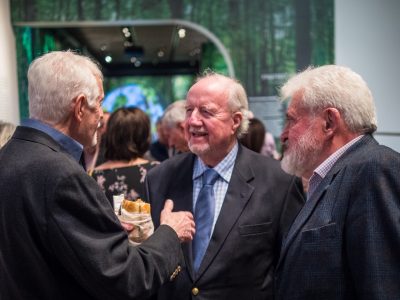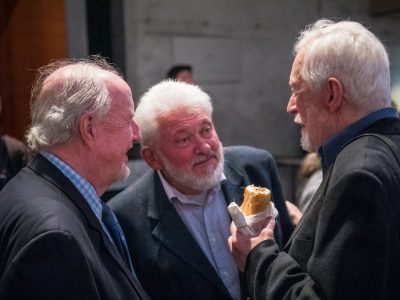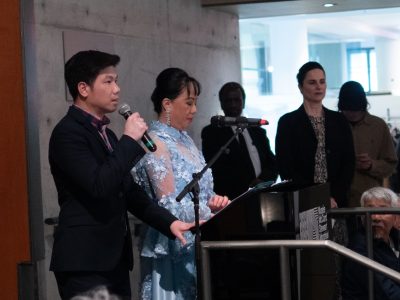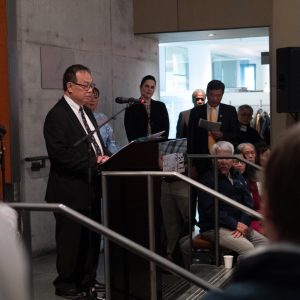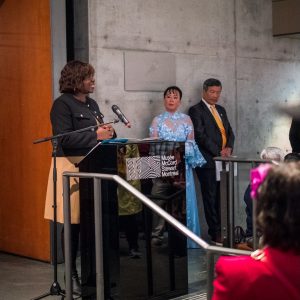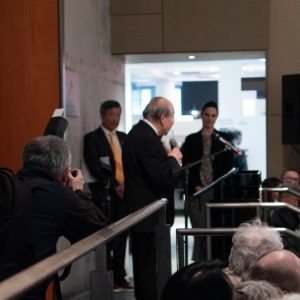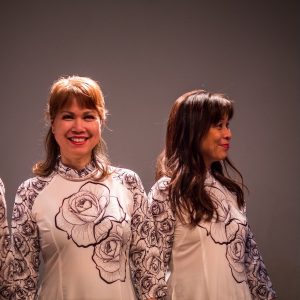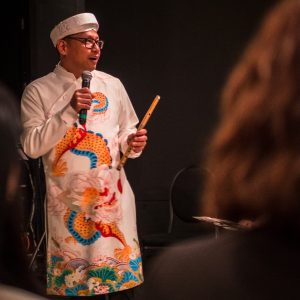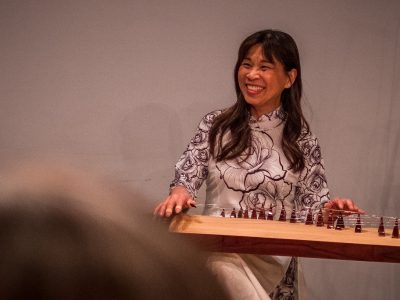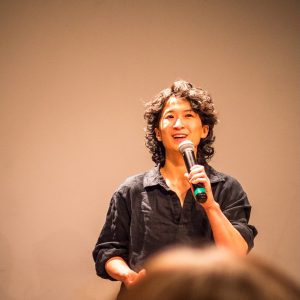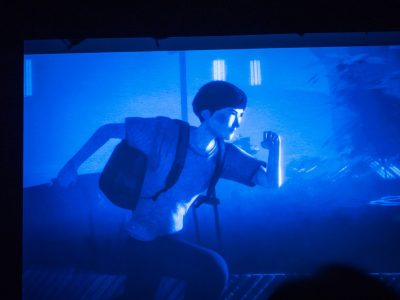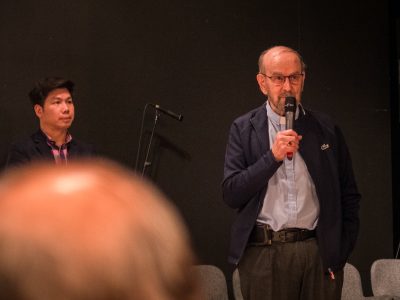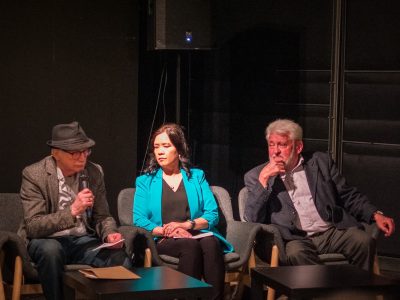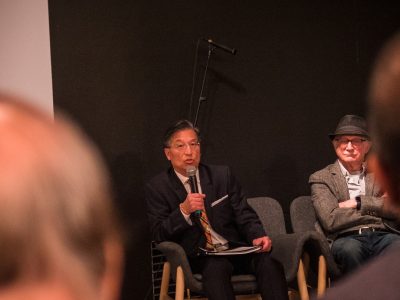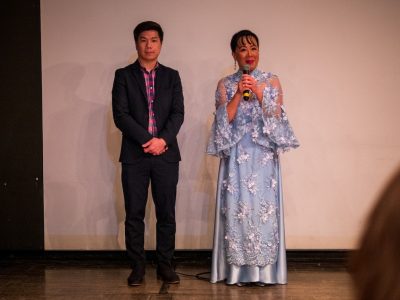The first reading of Canada’s Bill C-2 signals a significant expansion of digital surveillance and data collection powers within immigration enforcement, including enhanced capabilities for electronic monitoring, biometric data use, and information sharing across agencies. These provisions illustrate how the state increasingly relies on computational systems to govern migration, embedding control within data infrastructures that produce visibility and legibility on its own terms. This legislative shift exemplifies the broader Data Turn—where algorithmic models and surveillance reshape who is recognized or excluded. Examining this through the lens of contemporary visual art reveals how artists expose and resist these mechanisms of control, offering critical counter-narratives that emphasize opacity, ambiguity, and the contested politics of representation in immigration regimes. This article stems from my reading of Canada’s Bill C-2 informed by Joy Rohde’s Armed with Expertise (that I just finished reading), connecting contemporary data-driven governance in immigration to its historical roots in Cold War expertise, and exploring how these dynamics shape the politics of visibility and liminality.
The Data Turn has reordered not just how states govern, but how they see. In systems of immigration control, policing, and security, governance now operates through data—through predictive models, biometric templates, and behavioral scores. These systems do not represent reality; they construct it, enacting a vision of the world in which subjects are rendered as variables and futures as risks. This logic, increasingly dominant across global institutions, marks a shift from rule by law to rule by model. And as it reconfigures power, it also reconfigures aesthetics.
This shift towards data-driven governance deeply affects how migratory subjects are categorized and controlled, often reducing complex human experiences to discrete data points subject to algorithmic prediction and intervention. The imposition of predictive models and biometric surveillance transforms migrants from individuals with agency into risks to be managed, their identities flattened into probabilistic profiles. This reordering not only reshapes bureaucratic practice but also redefines the conditions of visibility and invisibility, inclusion and exclusion. Those caught in liminal states—between legality and illegality, presence and absence—are particularly vulnerable to these regimes of measurement and control, which perpetuate uncertainty and precarity.
Visual artists have responded to this transformation not only by thematizing data regimes, but by dismantling the very mechanisms that render them invisible. They expose the apparatus behind the interface—the wires, scripts, ideologies—and stage counter-visions that assert opacity, indeterminacy, and refusal. In doing so, they challenge the way the Data Turn governs the liminal, especially those living in the suspended space of migration, statelessness, and bureaucratic indeterminacy.
This artistic intervention reframes vision itself—not as a neutral or purely descriptive act, but as a tool of power embedded within technological and bureaucratic systems. By peeling back layers of digital mediation, these artists reveal how contemporary surveillance and data infrastructures actively produce knowledge and enforce hierarchies. Their work highlights that visibility is not simply about being seen, but about how one is seen, categorized, and ultimately governed—a dynamic that is especially acute for those inhabiting the ambiguous spaces of migration and statelessness.
Artists like Trevor Paglen and Hito Steyerl foreground this shift from image to instrument. In their work, surveillance footage, facial recognition outputs, and satellite tracking systems are not just visual materials—they are operational weapons. Paglen’s images of classified military sites or undersea data cables reveal the landscape of surveillance that underpins contemporary geopolitics. Steyerl, in pieces like How Not to Be Seen: A Fucking Didactic Educational .MOV File, explores how machine vision abstracts, targets, and governs. In both cases, the act of seeing is no longer passive; it is a condition of being classified and controlled. The migrant, in such systems, is no longer a presence to be engaged but a deviation to be filtered—a datapoint, a heat signature, a probability.
Paglen and Steyerl’s work exposes the mechanisms through which visibility becomes a tool of control, transforming subjects into data points within vast systems of surveillance. Yet this logic of enforced legibility provokes a critical response: a turn toward opacity as a form of resistance. Where the state insists on clarity and categorization, artists embrace ambiguity and fragmentation, challenging the totalizing gaze and creating spaces where identity and presence refuse easy definition. This dialectic between exposure and concealment reflects the lived realities of migrants caught within regimes that demand transparency but offer exclusion.
If the state’s data infrastructures demand visibility and legibility, many artists respond with strategic opacity. Édouard Glissant’s philosophy of opacity—his insistence on the right not to be reduced—resonates powerfully here. In the works of Wangechi Mutu and Walid Raad, opacity takes material form: fragmentation, distortion, layering, and pseudofactuality unsettle any stable claim to truth or identity. These aesthetic strategies echo the experience of navigating migration regimes—systems that demand transparency from those who are systematically excluded from its protections. Opacity becomes a refusal of capture. It asserts a right to complexity in the face of an infrastructure that reduces lives to binary certainties.
I am guided here by the words of WG Sebald and the art of Gerhardt Richter and their use of things like dust and blur as integral to understanding of history and memory, in addition to the use of light and shadows in works of art immemorial and its relation to knowledge.
Building on this embrace of opacity, other artists turn their attention to archives—the sites where power not only records but also erases and shapes memory. By interrogating immigration documents, military footage, and bureaucratic data, these artists reveal how archives carry forward histories of violence and exclusion. Their work challenges the illusion of “raw” data, exposing it instead as deeply entangled with structures of power that continue to marginalize and render migrants invisible or precarious. In doing so, they create counter-archives that reclaim erased voices and insist on recognition beyond official narratives, mirroring the ongoing struggles of those living in legal and social liminality.
Other artists interrogate the archive: not just what is remembered, but how, by whom, and with what effects. The work of Forensic Architecture, Susan Schuppli, and Maria Thereza Alves reveals the afterlife of data—how immigration records, censuses, or military footage embed structural violence into bureaucratic memory. Their work testifies to how data is never “raw”: it is collected through regimes of power, and it carries that violence forward. These artists reanimate what official systems erase, constructing counter-archives that expose the silences, absences, and structural forgettings built into systems of documentation. This resonates deeply with the immigrant condition, in which legal presence is provisional and recognition is always deferred.
As archival artists uncover the hidden violences embedded in bureaucratic memory, another group of practitioners turns to the physical and infrastructural dimensions of data governance. By making visible the often-invisible hardware and networks that sustain digital control, these artists reveal how power operates not only through data but through material systems—servers, cables, and code—that shape everyday life. This exposure challenges the myth of a seamless digital realm, reminding us that governance is grounded in tangible, contested spaces where decisions about inclusion and exclusion are enacted.
Where the logic of governance is increasingly immaterial—hidden in code, servers, and proprietary systems—some artists work to make the infrastructure visible. James Bridle, in exploring what he terms the “New Aesthetic,” captures the eerie, semi-visible zone where machine perception intersects with urban life and planetary surveillance. Ingrid Burrington’s maps and guides to internet infrastructure render tangible the cables, server farms, and chokepoints that quietly govern digital existence. These works push back against the naturalization of the digital by showing it as a system of decisions, exclusions, and material constraints.
The “Data Turn” can be understood as a continuation of intellectual movements that critically examine the production and mediation of knowledge, much like the “Literary Turn” of the late twentieth century. The Literary Turn foregrounded language and narrative as active forces shaping historical meaning and subjectivity, challenging claims to objective or transparent truth. Similarly, the Data Turn interrogates the rise of data and computational systems as new epistemic tools that do not merely represent social realities but construct and govern them. This shift compels historians to reconsider the archives, sources, and methodologies that underpin their work, recognizing that data is embedded within power relations and ideological frameworks. Both turns reveal the contingency of knowledge and demand critical attention to the infrastructures through which it is produced and deployed.
By revealing the physical infrastructure behind digital governance, artists highlight how power operates through material systems that govern access and control. This focus on the tangible complements artistic engagements with the symbolic and bureaucratic forms that mediate migration. Together, these practices expose how both infrastructure and imagery function as aesthetic regimes—tools that shape and enforce legal and political inclusion, while also offering sites for creative rupture and alternative narratives.
Even the forms that mediate migration—passport photos, visa documents, biometric scans—are aesthetic regimes. They precede legal recognition; they shape it. Artists like Bouchra Khalili, in works like The Mapping Journey Project, appropriate these documentary forms not to affirm their authority, but to rupture them. Her work stages alternative cartographies of movement—ones based not on state control, but on narrative, memory, and resistance. In such works, the migrant is not a risk profile, but a storyteller.
By transforming state documentation into acts of storytelling and resistance, artists reclaim the migrant’s agency from reductive systems of classification. This reimagining challenges the prevailing logic of legibility, opening space for more nuanced understandings of identity and belonging beyond the constraints of bureaucratic control.
Across these practices, art offers not just critique but proposition. It creates space for reimagining how we understand legibility, personhood, and the infrastructures that shape both. In contrast to the Data Turn’s promise of seamless optimization, these works embrace what is incomplete, contradictory, and opaque. They remind us that data is not destiny, and that what cannot be captured might still be what matters most.
Together, these artistic interventions reveal that data regimes are not neutral frameworks but deeply embedded with values and power. By embracing ambiguity and incompleteness, they challenge dominant narratives of control and certainty, opening new possibilities for understanding identity and presence beyond bureaucratic constraints.
For scholars working at the intersection of immigration, data, and liminality, this aesthetic terrain is not peripheral—it is central. Art shows us that the Data Turn is not merely technical; it is philosophical. It carries assumptions about what kinds of life count, what futures are permissible, and how uncertainty should be managed. Visual practices, especially those rooted in the experience of liminality, offer a different grammar of visibility—one attuned not to classification, but to ambiguity; not to risk, but to relation.






